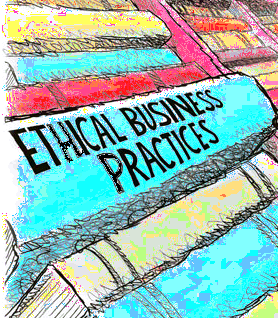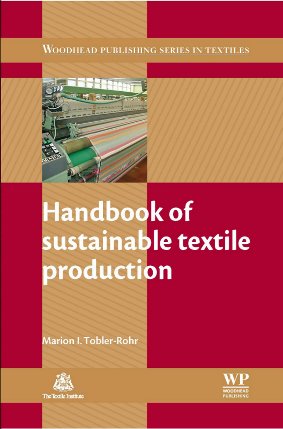In 2012, we have seen risk management and sustainability play a more important part in the agendas of leading fashion brands. Nevertheless, many companies still perform poorly at many stages of their supply chain and are unaware of the risks, particularly if they lie beyond their direct operations.
The following are the the main trends we see happening in the near and mid future. A few exist already but will become substantially more pronounced; others are just about to emerge and hit the surface of public awareness.
In 'To Die For', Lucy Siegle jumps head on into her very own wardrobe full of hidden skeletons - the results of her love for fashion and shopping. In 15 chapters she tells the story of why that is so - and how to do better.
Barcodes, RFID tags, and QR codes have each introduced a new era of on-product information distribution and acquisition.
In this article I would like to look at a family of digital solution components that many brands and manufacturers will already use and be reliant on, and that – if integrated – could be leveraged to provide full-depth traceability.
Supply chains, as a discipline of expertise, have come out of the hiding and recognise their role in reducing corporate risk. This is notably and specifically the case in fashion and textiles. At the same time, 'design' - not just in the creation room, but in all facets where it impacts the making, delivery and use of a product or service, is increasingly recognised as relevant.
Could it be that a a precipitate green revolution in design and fashion is taking place? PPR is ready “to jump on the sustainable fashion bandwagon.” But how do we define responsibility?
n the course of the last 2 years, the Greenpeace Detox campaign has repeatedly made waves.
The latest such incident happened in the context of what is possibly the world’s most relevant trade fair for performance and outdoor wear ISPO in January 2014. At that point of time, Greenpeace released news that in the water repellent coatings of jackets by some renowned brands, traces of fluorin had been identified. And that said test results had been ‘hidden’ from the public.
The healthcare industry's social responsibility goes beyond just workplace and supply chain issues; it's about its impact on society and what its real goals are. Trials and prevention efforts often overlook certain groups. Politics and money regularly determine who gets treated, in function of political agendas in some jurisdictions. And: Using the GDP to measure health isn't necessarily helpful as it incentives fixing problems rather then preventing them early on.
What means ethical in the fashion business? The lack of 1 widely accepted label is an issue. Yet: The principle problem is the lack of a consensus of what ethical business practises really are.
This is the second post of a two article series. It will look at what we can say about the 'ethics behind a brand' from how they practically do business.
Perfumery can be a dirty business. In this interview with Marina Barcenilla, founder and creative perfumer of Glastonbury-based The Perfume Garden, we investigate the company's approach to ethical and vegan ingredient sourcing.
In Medieval times the location of a tannery was heavily based on the requirements of a nearby river or stream, cattle which could supply the hide, and of course oak trees which would supply the bark needed for the tanning process. In the present, because of the demand for luxury at the cheapest possible prices, the industry is pushed out to where it is easier to ignore the moral and environmental reek.
The Guardian Sustainable Business & Observer Ethical Awards 2012 edition in fashion terms. Cradle to Cradle is becoming popular in the nitty gritty of the carpet industry, Puma's Profit and Loss Accounts get credit, and Kids imitate Katherin Hamnett's 1980's slogan T-shirts to raise awareness.
Italy. Known for the style of its inhabitants, the quality and sharp cut of its suits, the inventiveness of its fashion designers, the quality of its fabrics. Yet, if we were to talk sustainability in textiles and fashion, what is going on on the ground?
J&R Designs in Homerton is a small factory in London's East End, the only remaining of its kind, run by the Persaud family, and which specialises in hand crafted quality leather handbags manufacturing. A portrait.
The textile supply and production chain is complex. With this in mind, the ‘Handbook of sustainable textile production‘ is a unique resources: bit fosters knowledge acquisition across the different disciplines and specialities in the textile production chain, it prepares the ground for a factual, holistic discourse, and dissemination of best practise.
London Fashion Week 02/2011 - Day 2: EstEthica is successful so it seems. But what is there going on behind the scenes? Some controversial and critical insights.
The reaping (black market) trade in reptile skins for the luxury fashion and accessories market is an openly talked about, albeit ugly, reality of the present.
The recently published UNCTAD BioTrade report and toolkit provides useful and pragmatic info for designers.
In the luxury segment, production focuses on highly complex garments and low order volumes that might involve just five pieces per style which makes sourcing very challenging. The approach currently pursued by European high-end apparel brands to address the problem is that of ‘High End Fashion Cluster‘.
'Make it British', or the equivalent: French, Italian, German, Spanish ..., is often talked of as the ultimate panacea to address the lack of sustainability in the fashion industry. A few reasons why it all is slightly more complicated than it sounds.
Made in Neukölln: A social enterprise project that aims at introducing Berlin high school students to the different textile trades of the apparel, while pitching for social integration and sustainable supply chains.




